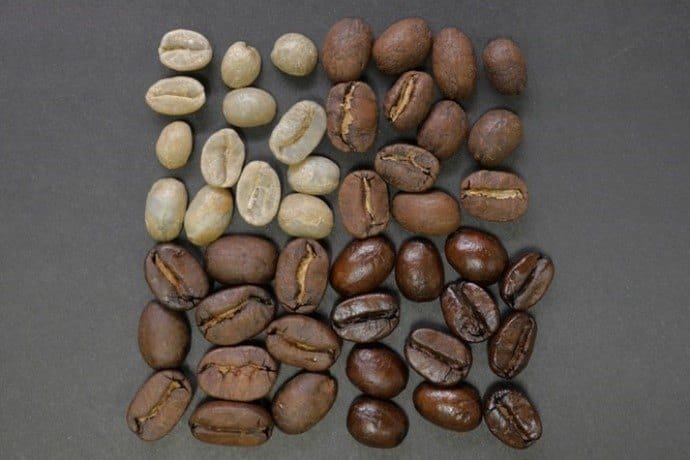Roasting coffee beans is both a science and an art form. The process involves transforming green coffee beans into the aromatic and flavorful beans we associate with our beloved cups of coffee.
Each step in the roasting process contributes to the final taste, aroma, and character of the coffee. In this article, we will explore the art of roasting coffee beans, highlighting different techniques and the unique flavors they can produce, with a specific focus on the Río Coco de Nicaragua and Brazilian coffee beans.
Introduction to Coffee Bean Roasting
Roasting coffee beans is a critical step in coffee production. The process involves applying heat to the green coffee beans, causing them to undergo various chemical reactions.
These reactions result in the development of aromatic compounds, oils, and complex flavors. Roasting requires skill and precision to achieve the desired flavor profile and balance.
Roasting Techniques
a. Light Roast:
A light roast, also known as a City roast, involves roasting the beans at lower temperatures for a shorter duration. This technique preserves the bean’s original characteristics, resulting in a light body, high acidity, and subtle flavors.
Light roasts highlight the delicate floral and fruity notes of coffee, allowing the unique characteristics of the Río Coco de Nicaragua beans, known for their bright acidity and citrusy flavors, to shine through.
b. Medium Roast:
A medium roast, or Full City roast, involves slightly longer roasting times and higher temperatures. This technique strikes a balance between preserving the bean’s original flavors and developing deeper caramelized and chocolatey notes.
Medium roasts often exhibit a well-rounded body, moderate acidity, and a touch of sweetness. Brazilian coffee beans, known for their nutty and chocolatey flavors, are often roasted to a medium level to enhance their inherent characteristics.
c. Dark Roast:
Dark roasts, such as French roast or Italian roast, involve extended roasting times and higher temperatures. The longer exposure to heat results in more pronounced caramelization and the development of rich, bold flavors.
Dark roasts tend to have a full body, low acidity, and smoky or bittersweet undertones. However, it’s important to note that dark roasts can mask some of the original flavors of the beans, including the distinct flavors of Río Coco de Nicaragua and Brazilian coffee beans.
Flavor Profiles and Characteristics
a. Río Coco de Nicaragua
Río Coco de Nicaragua beans are known for their exceptional quality and unique flavor profile. Lighter roasts can accentuate the bright acidity and citrusy notes, reminiscent of lemon or orange zest.
Medium roasts bring out the bean’s sweetness, with flavors of caramel and brown sugar coming to the forefront. Dark roasts offer a full-bodied cup with deeper, smoky undertones, while still retaining the bean’s inherent complexity.
b. Brazilian Coffee Beans
Brazilian coffee beans have a wide range of flavor profiles, depending on the region and varietal. Lighter roasts accentuate the bean’s nutty and cocoa flavors, with hints of peanut and milk chocolate.
Medium roasts offer a balanced cup, enhancing the natural sweetness and introducing notes of caramel and toasted nuts. Dark roasts intensify the bean’s richness, providing a full-bodied cup with dark chocolate, molasses, and sometimes even smoky notes.
Experimenting with Roast Levels and Blending
Coffee enthusiasts can delve into the world of roasting by experimenting with different roast levels and blending techniques. Roast levels can be adjusted within the light, medium, and dark spectrum to fine-tune the desired flavors.
Blending different coffee bean varieties and roast levels can result in unique flavor profiles that offer a balance of acidity, sweetness, and body.
By blending Río Coco de Nicaragua with medium-roasted Brazilian coffee beans, for example, one can achieve a cup that showcases the brightness of the Nicaraguan beans while complementing them with the nutty and chocolatey flavors of Brazilian beans.
Roast Freshness and Storage
Regardless of the chosen roasting technique and the coffee bean origin, freshness is crucial. After roasting, coffee beans release carbon dioxide for a period known as degassing.
It is generally recommended to allow freshly roasted beans to rest for a few days before brewing. Proper storage in airtight containers away from direct sunlight and excessive moisture is also essential to maintain the beans’ flavor and aroma.
Wrap Up
In conclusion, the art of roasting coffee beans involves a careful balance of heat, time, and technique to bring out the desired flavors and characteristics of the beans.
Whether it’s the vibrant citrusy notes of Río Coco de Nicaragua or the nutty and chocolate flavors of Brazilian coffee beans, each roasting technique can enhance and highlight the unique attributes of the beans.
Experimenting with different roast levels and understanding the flavor profiles can lead to a more personalized and enjoyable coffee experience. So, grab your favorite coffee beans, explore the world of roasting, and embark on a flavorful journey.








